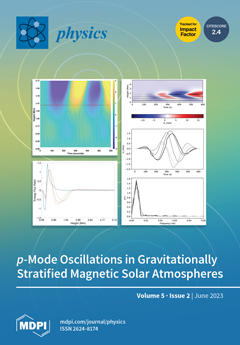In this paper, using the concept of multi-pomeron exchange, we develope a Monte Carlo model of interacting quark–gluon strings acting as particle-emitting sources aimed at describing inelastic proton–proton interactions at high energies. The implemented 3D (three-dimensional) dynamics of colour string formation resulted in
[...] Read more.
In this paper, using the concept of multi-pomeron exchange, we develope a Monte Carlo model of interacting quark–gluon strings acting as particle-emitting sources aimed at describing inelastic proton–proton interactions at high energies. The implemented 3D (three-dimensional) dynamics of colour string formation resulted in their finite length in the rapidity space and in the fluctuating event-by-event spatial density. Thus, this results in string cluster formation because of the fusion mechanism and the appearance of long-range multiplicity and mean transverse momentum (mean-
) correlations in rapidity. We study, via the pseudorapidity dependence, the sensitivity to the details of the 3D dynamical formation of strings for several observables such as the forward–backward correlation coefficient value, strongly intensive quantity,
, and the “almost” strongly intensive observable, the variance,
, of the distribution of the asymmetry coefficient,
C. The strongly intensive quantity
is used in this study to suppress trivial statistical fluctuations in the number of particles emitting similar types of sources and to reveal the intrinsic fluctuations of a single source. We demonstrate the connection between
and such often used observables as cumulants, factorial cumulants, and
. We stress the importance of the contribution of “short” strings and the event asymmetry of the initial conditions on the long-range correlation measures. We argue that string cluster formation because of the fusion mechanism explains the collective effects seen in multiplicity and transverse momentum–multiplicity,
–
N, long-range correlation functions.
Full article





